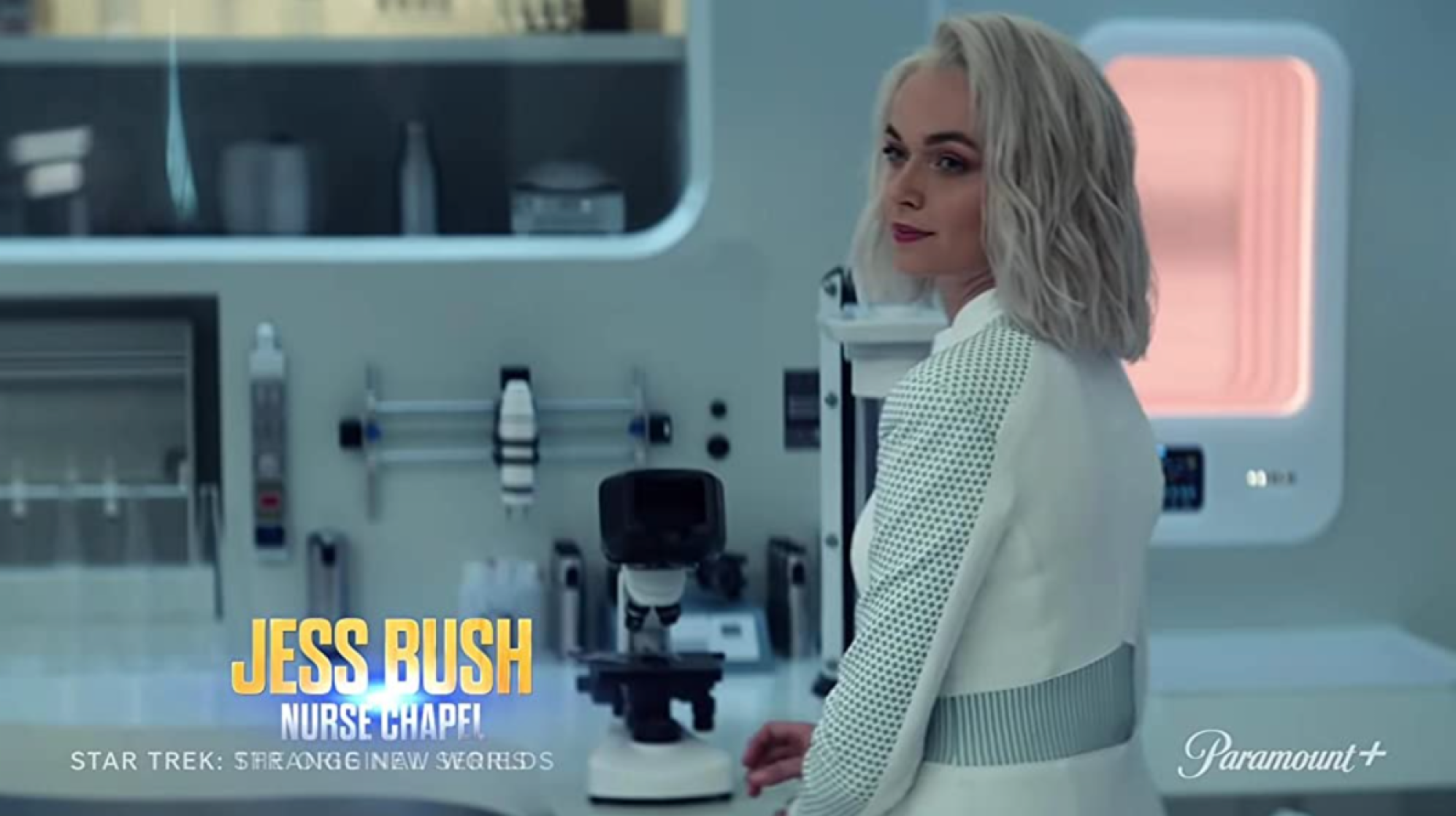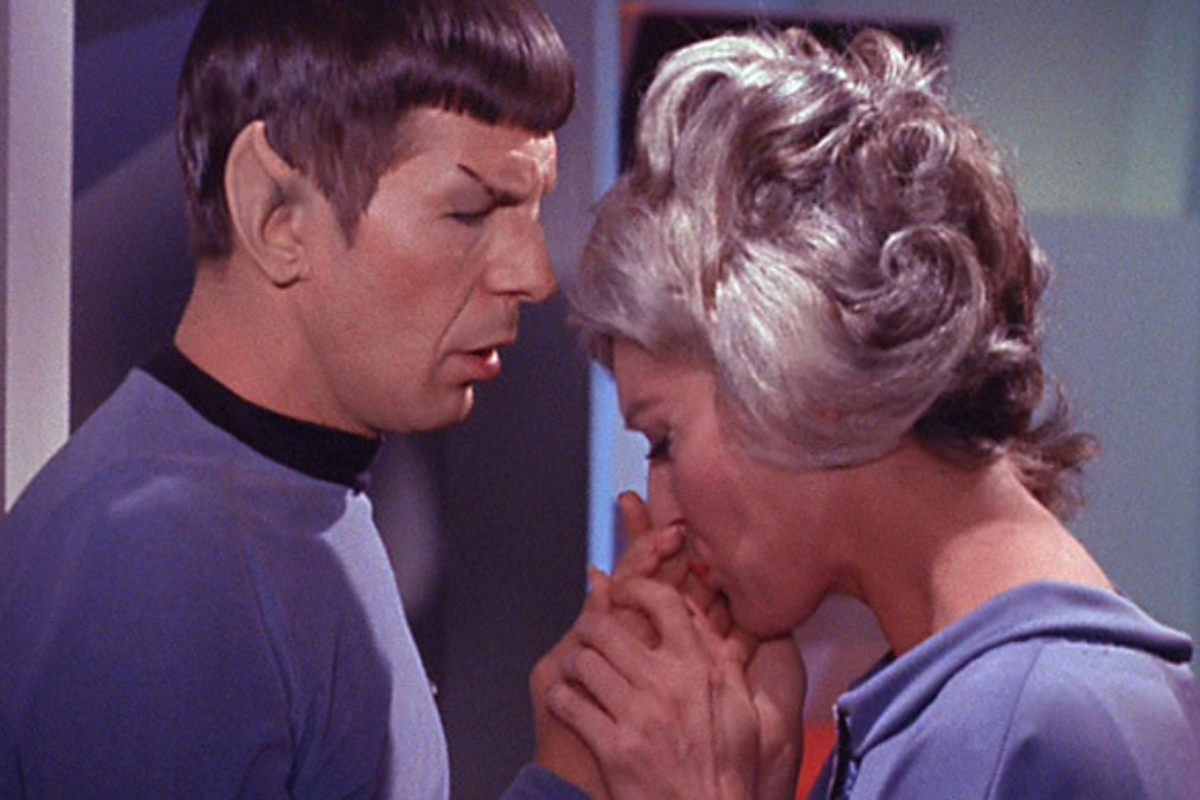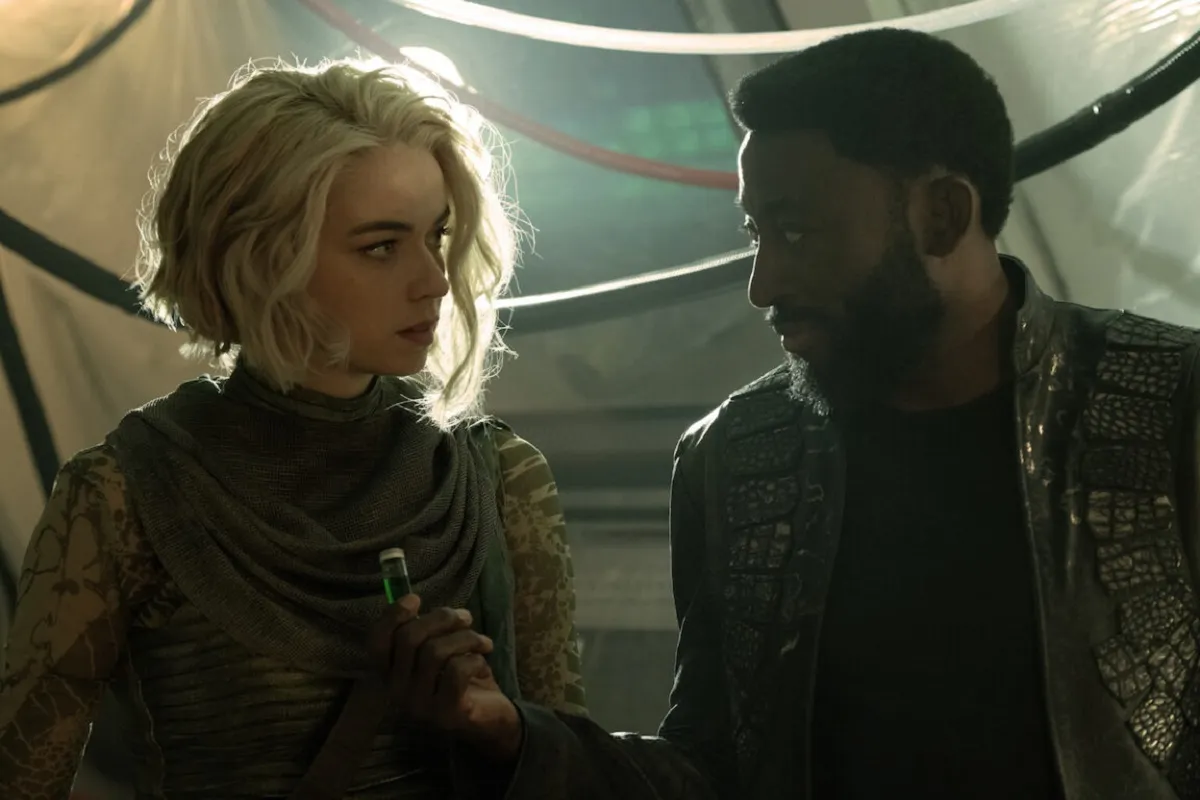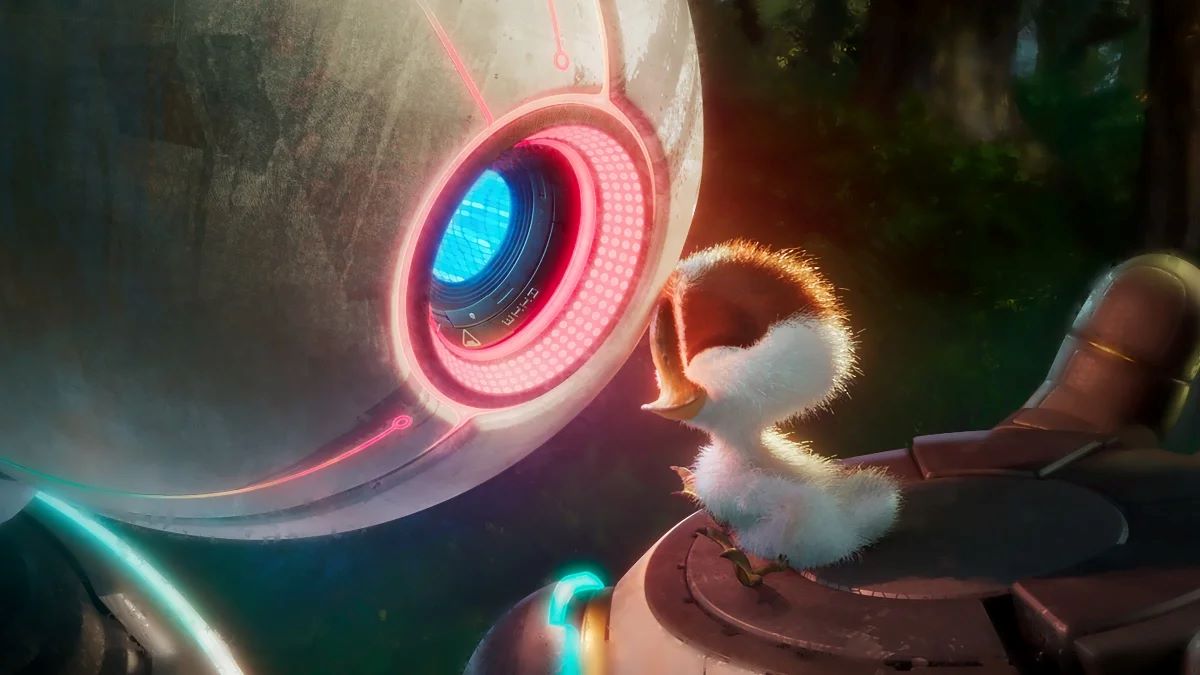Christine Chapel is a character who recurs across different Star Trek series and timelines, including Star Trek: The Original Series (TOS) where she was played by the inimitable Majel Barrett, and the Kelvinverse films where she was limited to a voice cameo from an uncredited actor. Beginning her career as a nurse and genetic research specialist Chapel ends up as both a medical doctor and high-ranking Star Fleet officer in the prime universe. But what about in Stark Trek: Strange New Worlds (SNW)? Which continuity does this version of Christine Chapel (Jess Bush) belong to, and how does she differ from previous versions of the character?
The Continuity
So there’s some debate about which continuity SNW‘s belongs to, and whether or not it exists in a continuity all its own. In short, it comes down to whether or not Captain Pike having seen his future via time crystal in the Star Trek: Discovery (DIS) episode “Through the Valley of Shadows” created a new timeline that so far only DIS and SNW take place in.
Observation of an event is known to affect the outcome even if no action beyond observation is taken to interfere with it (think Schrodinger’s Cat, and more recent experiments with atoms), and so, according to this theory, the timeline split the moment Pike’s vision began. Then, for those unconvinced by quantum physics, there’s the fact that Pike’s decision-making is clearly influenced by what he saw, meaning that, for all that he is trying to preserve the timeline, doing so completely is impossible as his day-to-day actions are influenced by his new, burdened, emotional state.
These changes may be small, and largely irrelevant in the grand scheme of things (unlike his eventual accident, which is necessary to avoid a much worse outcome for the whole galaxy), but they are changes nonetheless, the very first of which would have splintered the timeline if the vision itself did not. Assuming, of course, that Pike’s vision wasn’t always a part of the original timeline, and everything he does, as a result, is also a part of it, SNW and DIS would both still be part of the prime timeline. Time travel is complicated. All we can say for sure is that SNW isn’t set in the Kelvinverse.
The New Nurse Chapel

Christine Chapel has a complicated history with the franchise. Though she had what should have been a compelling back story in TOS—giving up a career in bio-research in the hopes of finding her missing fiance by serving on the Enterprise—she was written into the show as a means of emphasizing Spock’s Vulcan stoicism and rarely allowed to develop beyond that.
With a hefty dose of 1960s sexism at play, Chapel’s character was usually restricted to pining over Spock, complete with teary eyes, a quivering lip, and tragic, steadfast devotion in the face of his regular rejections. Majel Barrett didn’t like playing the character for this reason, and a lot of fans really didn’t like her either, finding the writing tired and sexist even then. Despite these limitations, however, Chapel definitely showed the glimmers of something more, which eventually led to her becoming a niche favorite and fans calling for her return in later movies.
A dedication to medical ethics, prioritizing them over even her duty as a Star Fleet officer and the chain of command; intense loyalty to, and ability to work with, the cranky Dr. McCoy; and a clever, empathetic grasp on patient psychology all laid the groundwork for the much more interesting character hidden under the misogyny—something SNW dives right into creating and exploring with Jess Bush’s version of Christine Chapel.
Whether or not SNW exists in a parallel continuity or is still part of the prime timeline, most of the changes made to Nurse Chapel are retcons rather than the result of an alternate continuity, as they predate even the earliest point at which the timeline may have split.
Though in TOS she first served on the Enterprise under Kirk’s Captaincy, in SNW she’s already a Star Fleet officer aboard the Enterprise long before Kirk gets anywhere near it, with a history of serving aboard several other ships as well. The implication is that Chapel entered Star Fleet through the usual route of training at the academy, with her time as part of that research group either a break-in or part of her Star Fleet career instead of the other way around. She’s also a more physically active character, in keeping with the military-style physical training and fitness requirements Star Fleet has for its members regardless of gender (something TOS didn’t quite hit the mark on, as progressive as it was for the time). Bush and the creative team chose to highlight this by switching her uniform from tunic dress to jumpsuit.
Chapel has also undergone some significant personality changes. Speaking in an interview with Den of Geek, Bush explained that these are all traits she saw in the original version of Nurse Chapel in TOS, just expanded on and developed. There’s also a little bit of reverse engineering going on in order to create a younger, less jaded version of the character to fit the show’s prequel setting. SNW Nurse Chapel is bolder, more confident and less reserved, and possessed of a wicked sense of humor she uses both to comfort her patients and as a deflection mechanism. There’s still a core of grief and sadness to her, though whether that’s also tied to a missing fiance or rooted solely in the things she experienced during the Klingon War remains to be seen. Nonetheless, it manifests differently and isn’t the sum of who she is or how she’s depicted. She gets to be a fully rounded human being here, maladaptive coping mechanisms, commitment issues, and all.
Relationship with Spock

As with TOS, Chapel does develop romantic feelings for Spock, but there’s a lot less pining, and the relationship happens to be a lot more mutual. Spock spends much of the series struggling with his mixed species identity, fearing his humanity and whether or not it makes him unworthy or incapable of being a true Vulcan. Chapel helps him through that, as well as his relationship struggles with the wholly Vulcan T’Pring, leading to the two of them to develop feelings for each other that they try at various times to repress and keep under wraps. It’s a complicated relationship, and if it doesn’t end with a retcon of their TOS relationship in favor of something more intimate by the end of the show, then it does re-contextualize it into something far more interesting.
Sexuality
Where Roddenberry was prevented from featuring LGBT+ characters in TOS, SNW has no such restrictions and features several queer characters and an unblinking, casual acceptance from the rest of the cast. Queerness is unremarkable in SNW, while a comment from Pike in the episode “Spock Amock” makes it clear that homophobia is not just far in the past but something recognized as reprehensible by Federation society. In the same episode, Chapel is revealed as bisexual to the audience through a conversation between her and Lt. Ortegas, as they discuss a disastrous “casual” fling Chapel once had with a woman in the context of her current, allegedly equally casual, relationship with a man. There’s no coming out, shock, or surprise involved, and no suggestion that she might be confused, showcasing how ordinary queerness has become by the time of SNW while also providing queer viewers with some excellent bisexual representation.
(featured image: Paramount+)










Published: Jul 21, 2023 07:54 am